
Yangjae Station is a station on the Seoul Subway Line 3 and Shinbundang Line. It was the southern terminus of Line 3 until October 30, 1993, when the line was extended to Suseo station, and it became a transfer station with the Shinbundang Line on October 28, 2011. It is located in Yangjae-dong, Seocho and Gangnam District, Seoul.
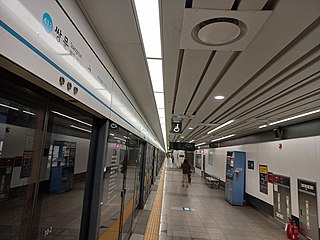
Ssangmun Station is an underground station on Seoul Subway Line 4 in Dobong-gu, Seoul, South Korea.

Jongno 3(sam)-ga Station is an underground station on lines 1, 3 and 5 of the Seoul Subway in South Korea.

Myeong-dong Station is a station on the Seoul Subway Line 4. This station is located in Jung-gu, Seoul.
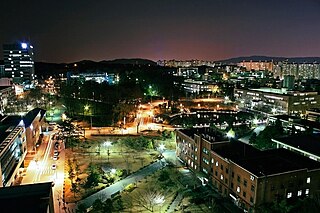
Nowon District (Nowon-gu) is a residential district of Seoul, South Korea, located in the most northeastern part of the metropolitan city. It has the highest population density in Seoul, with 619,509 people living in the area of 35.44 km².
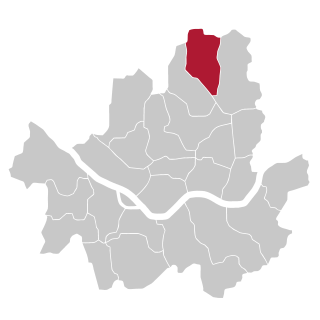
Dobong District is one of the 25 districts of Seoul, South Korea. As of 2020, Dobong has a population of 315,979 and an area of 20.71 square kilometres (8.00 sq mi), and is divided into four administrative neighborhoods. The district is located in northeastern Seoul, bordering the Gyeonggi Province cities of Yangju and Uijeongbu to the north, and the districts of Gangbuk to the southwest and Nowon to the east.

Yeongdeungpo station is a ground-level railway station in Seoul, South Korea. The station is located in Yeongdeungpo Dong, Yeongdeungpo-gu, and is a stop on the Gyeongbu Line, Honam Line and Seoul Subway Line 1. The station is integrated into the Yeongdeungpo Lotte Department Store. Located in the station are Lotteria, Dunkin' Donuts, Krispy Kreme, and KFC.
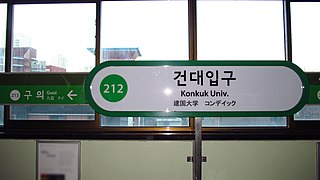
Konkuk University Station is a rapid transit station on Seoul Subway Line 2 and Seoul Subway Line 7. It is located in Hwayang-dong in the Gwangjin-gu administrative district of Seoul. It is adjacent to Konkuk University from which it takes its name. Line 2 is serviced by an elevated platform while Line 7 is serviced by an underground platform. The station has connections to ten bus lines through its six exits as well as a connection to the airport shuttle bus. The station services Hwayang-dong as well as Jayang-dong and Noyu-dong. The area around the station is mixed residential and small commercial businesses. Exits from the underground Line 7 platform open into Konkuk University and the adjacent Star City shopping and high-rise residential tower complex.

Chang-dong Station is a station on Seoul Subway Line 1 and Line 4. It is located in Chang-dong, Dobong-gu, Seoul. A shopping center was planned for this site, but the empty lot has never been developed due to the bankruptcy of the contractor behind said project. The station is, however, home to a cluster of pojangmacha stalls.

Mangwolsa Station is a metro station on Seoul Subway Line 1. Named after a Silla-era Buddhist temple in the mountains to the west, it is the first station for services leaving Seoul heading north, and lies in the city of Uijeongbu.

Banghak station is a subway station on Line 1 of the Seoul Metropolitan Subway. It is the closest station to the Dobong-gu District Office in Seoul.
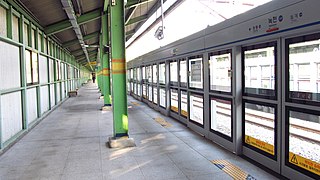
Nokcheon station (Korean: 녹천역) is a metro station on Seoul Subway Line 1 in South Korea. It is located in the northern end of the city.

Jihaeng Station is a ground-level metro station on Line 1 of the Seoul Subway in Jihaeng-dong, Dongducheon, South Korea. It opened on January 30, 2005, to services on the Gyeongwon Line and services on the Seoul Metropolitan Subway began calling here on December 15, 2006. The station offers access to Dongducheon Foreign Language High School, Central Middle and High School, Jihaeng Elementary School, Science Tower and Songnae-dong Office, among other places.
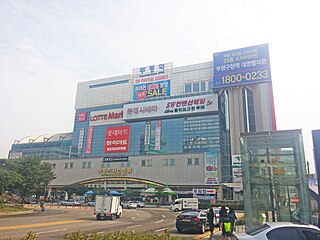
Bupyeong station is a subway station located in Bupyeong District, a district in Incheon, South Korea. This station is on the Seoul Subway Line 1 and Incheon Subway Line 1. It is one of the busiest stations on the Incheon line because of its central location and its connection to the Seoul line.

Dongducheon Jungang Station (Korean: 동두천중앙역) is a train station on the Seoul Subway Line 1 and the Gyeongwon Line. The name means Dongducheon Central Station. It was also once known as Eosu-dongStation.

Yangju Station is a train station on Seoul Subway Line 1 and the Gyeongwon Line. The name comes from Yangju, the city where this station is located. Until December 2007, it was called Junae Station.

Seojeongni Station is a station in Seojeong-dong, Pyeongtaek, South Korea. Mugunghwa-ho trains running on the Gyeongbu Line stop here. Additionally, services on Seoul Subway Line 1 have been calling at this station since 2005. Its station subname is Kookje College.

Juan station is a subway station on the Seoul Metropolitan Subway Line 1 and Incheon Subway Line 2. This station receives the second-highest number of crowds along the entire Incheon line due to its proximity to the downtown area. It is also near Inha University and Inha Technical College.

Seoul Transportation Corporation, branded as Seoul Metro, is a municipal-owned corporation owned by Seoul Metropolitan Government, and one of the two major operators of Seoul Metropolitan Subway with Korail.




















